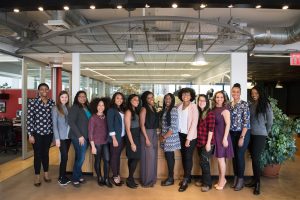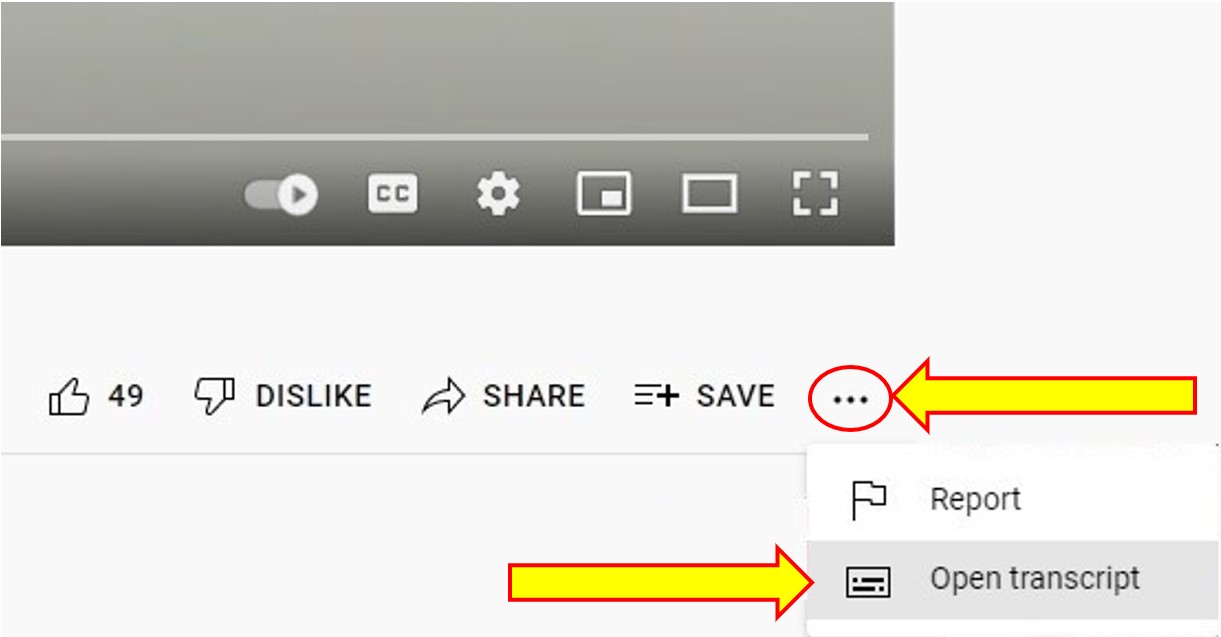4.4 Cultural Competence & Different Populations

Video 1: What Is Cultural Competence?
University students talk about what cultural competence is and what cultural competence means to them personally.
What is Cultural Competence. Video by: Arkansas Open Educational Resources (OER)
Transcript
To Access the Video Transcript:
1. Click on “YouTube” on the bottom-right of the video. This will take you directly to the YouTube video.
2. Click on the More Actions icon (represented by three horizontal dots)
3. Click on “Open Transcript”

Video 2: Cultural Competence In Denial And Polarization
University students discuss what their experiences have been with either themselves or with others who have mindsets in Denial and Polarization in a monocultural mindset.
Denial is the first orientation in the IDI continuum and indicates a person is disinterested or avoidant of differences. Individuals in this orientation may avoid those who are different from themselves and view their own cultural values and practices as preferable and may be critical of the cultural values and practices of others. Approximately 2% of people fall within Denial. The best strategy is for them to notice and recognize differences.
Next, Polarization (16%) is the “us vs. them” mindset, where people have a natural tendency to judge differences, and may become Defensive of their own way, identity, or culture; or they fall within Reversal, which is valuing others’ cultures over one’s own, and may report being embarrassed or ashamed of one’s own culture. The best strategy for moving beyond these orientations is to start searching for commonalities among cultural groups.
Video 2: Cultural Competence in Denial and Polarization; Video by: Arkansas Open Educational Resources (OER)
Transcript
To Access the Video Transcript:
1. Click on “YouTube” on the bottom-right of the video. This will take you directly to the YouTube video.
2. Click on the More Actions icon (represented by three horizontal dots)
3. Click on “Open Transcript”

Video 3: Cultural Competence In Minimization
University students discuss what their experiences have been with either themselves or with others who have mindsets in Minimization.
Most people (65%) fall within Minimization, which is the tendency to focus too much on similarities and by ignoring differences; essentially, this orientation represents “colour-blindness,” where people say, “I don’t see colour, we’re all the same” but takes away the value of individuality with which one identifies. This expectation of cultural commonality and universal values and principles may mask a deeper recognition of cultural differences. These individuals tend to have really “good hearts,” believe in equality and humanity but have poor impact. The best strategy for moving beyond this orientation is to explore and focus on issues of power, privilege, and systemic differences.
Transcript
To Access the Video Transcript:
1. Click on “YouTube” on the bottom-right of the video. This will take you directly to the YouTube video.
2. Click on the More Actions icon (represented by three horizontal dots)
3. Click on “Open Transcript”

Video 4: Cultural Competence In Acceptance And Adaptation
University students discuss what their experiences have been with either themselves or with others who are oriented in Acceptance and Adaptation.
Moving toward a more intercultural mindset, individuals in Acceptance (15%) are those who recognize and appreciate cultural differences and similarities, but need additional experiences, as they are able to “talk the talk,” but not quite able to “walk the walk.” These individuals may recognize and appreciate culturally different patterns and commonalities in both their own and others’ cultures but may not know how to advance toward a more intercultural mindset.
Adaptation (only 2% of people) is truly becoming able to “walk the walk” and to adapt one’s behaviour within both cultural similarities and differences. Those who find themselves in the Adaptation orientation are capable of shifting cultural perspectives and altering their behaviour in ways that are both culturally appropriate and authentic. Cultural competence is a journey, not an event, and one must continue growing in their cultural competence to have an Adaptation mindset. Those who reach this orientation have a strong sense of cultural self-awareness and understanding and are able to “bridge” behaviours across cultural differences.
Cultural Competence in Acceptance and Adaptation. Video by: Arkansas Open Educational Resources (OER)
Transcript
To Access the Video Transcript:
1. Click on “YouTube” on the bottom-right of the video. This will take you directly to the YouTube video.
2. Click on the More Actions icon (represented by three horizontal dots)
3. Click on “Open Transcript”

Video 5: Becoming Culturally Competent
University students discuss what it means to become culturally competent. They provide specific strategies that anyone can use to advance along the continuum.
Based on the IDI framework, three major steps are needed to grow in cultural competence:
- Learning about your own self-identity and culture,
- Learning about cultures that are different from your own, and
- Having experiences where you can navigate cultural differences and similarities.
A deeper cultural self-understanding helps one to make sense of and respond to differences in cultural perspectives based on their own culturally learned perspectives, while a deeper cultural other-understanding helps individuals make sense of and respond to differences in culture as they are presented by other cultural groups.
Transcript
To Access the Video Transcript:
1. Click on “YouTube” on the bottom-right of the video. This will take you directly to the YouTube video.
2. Click on the More Actions icon (represented by three horizontal dots)
3. Click on “Open Transcript”

LICENSE
Creating Cultural Competence by Jacquelyn Wiersma-Mosley and Margaret Miller Butcher is licensed under a Creative Commons Attribution 4.0 International License, except where otherwise noted.
Don’t Put People in Boxes
Quite often when we’re looking at Cultural Competence, different populations or diverse communities we don’t always take into consideration how diverse each culture can be.
We need:
- Value diversity
- Conducting cultural self-assessment
- Understand the dynamics of difference
- Institutionalizing cultural knowledge
- Adapt to diversity and individuality
Once size does not fit all. People are not a dichotomy (a division or contrast between two things that are or are represented as being opposed or entirely different). For example: Good/bad or yes/no.
Don’t Put People in Boxes
Video by: NewHope Church. (2017, May 22). Don’t Put People in Boxes [Video]. When we label people and put them in different boxes, we don’t see PEOPLE for who they truly are. This video proves that we have a lot more in common than we think and we should keep that in mind when we encounter anyone who might seem different than we are. Credit to TV2Danmark for inspiring us to make this.
Transcript
To Access the Video Transcript:
1. Click on “YouTube” on the bottom-right of the video. This will take you directly to the YouTube video.
2. Click on the More Actions icon (represented by three horizontal dots)
3. Click on “Open Transcript”

Different Population
Race & Privilege: A Social Experiment – We often say the words: diversity, culture, race, language or religion, and we don’t realize how different it is for so many. We normalize certain behaviours which is not ok. There is privilege. Watch what happens in this experiment – and how participants react.
Race & Privilege: A Social Experiment | Regardless Of Race | CNA Insider. We say the words, “Regardless of race, language or religion.” But majority privilege may be more real in Singapore than some would like to think. Watch what happens in this experiment – and how participants react.
Transcript
To Access the Video Transcript:
1. Click on “YouTube” on the bottom-right of the video. This will take you directly to the YouTube video.
2. Click on the More Actions icon (represented by three horizontal dots)
3. Click on “Open Transcript”

It is important when working with cultural competence and different populations that we are aware of diversity, inclusion, individuality, whenever we are working through a Case Management Lens. It will look different for each individual person, even if they have similarities. It can also be applied differently depending on what agency you work for.
References
- NewHope Church. (2017, May 22). Don’t Put People in Boxes [Video]. YouTube. https://www.youtube.com/watch?v=zRwt25M5nGw
- CNA Insider. (2016, August 14). Race & Privilege: A Social Experiment | Regardless Of Race | CNA Insider [Video]. YouTube. https://www.youtube.com/watch?v=F2hvibGdg4w


